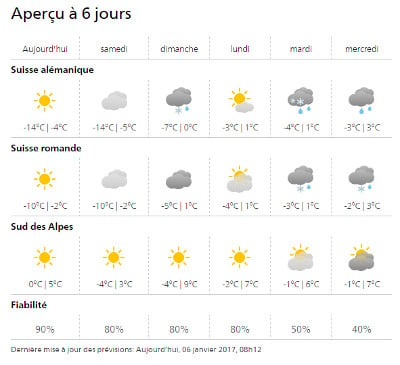
WEATHER
Switzerland freezes in coldest night of winter so far
Thursday night to Friday morning in Switzerland was the coldest night of winter to date, with temperatures dropping to nearly minus 30 degrees in some parts of the country, said MeteoNews on Friday.
Published: 6 January 2017 09:10 CET

The village of La Brevine holds the record for Switzerland's lowest temperature. Photo: Caroline Bishop
The commune of La Brévine, a village in the Jura mountains near Neuchâtel, was the coldest in the country early on Friday morning, reaching a low of -29.9C.
Thanks to its unusual microclimate La Brévine is regularly the coldest place in Switzerland and holds the record for the lowest ever temperature, of -41.8C, reached in January 1987.
Last night this so-called ‘Siberia of Switzerland’, which sits at just 1,050m, was even colder than the Jungfraujoch – Switzerland’s highest railway station – which, despite being at 3,580m, was five degrees warmer, at -24C.
On the Swiss lowlands, under 800m altitude, the village of Welshenrohr in the canton of Solothurn was the coldest, at -18.4C.
The cities also felt the chill, with Zurich airport recording -13.3C and Freiburg -12.1C.
After a long dry spell in December, Switzerland saw its first snowfall of the year across German-speaking parts earlier this week, with flurries also reaching the Lake Geneva region on Thursday.
However the country will be mostly dry, bright and cold on Friday, with temperatures below freezing in many parts.
The low temperatures will persist over the weekend.
Switzerland’s top five coldest places on January 6th (according to MeteoNews):
La Brévine (1,050m) -29.9C
Corvatsch (3,315m) -26.9C
Jungfraujoch (3,580m) -24C
Buffalora/Ofenpass (1,970m) -24C
Titlis (3,040m) -23.8C

The big chill is expected to last through the weekend. Source: MeteoSuisse
Url copied to clipboard!



 Please whitelist us to continue reading.
Please whitelist us to continue reading.
Member comments